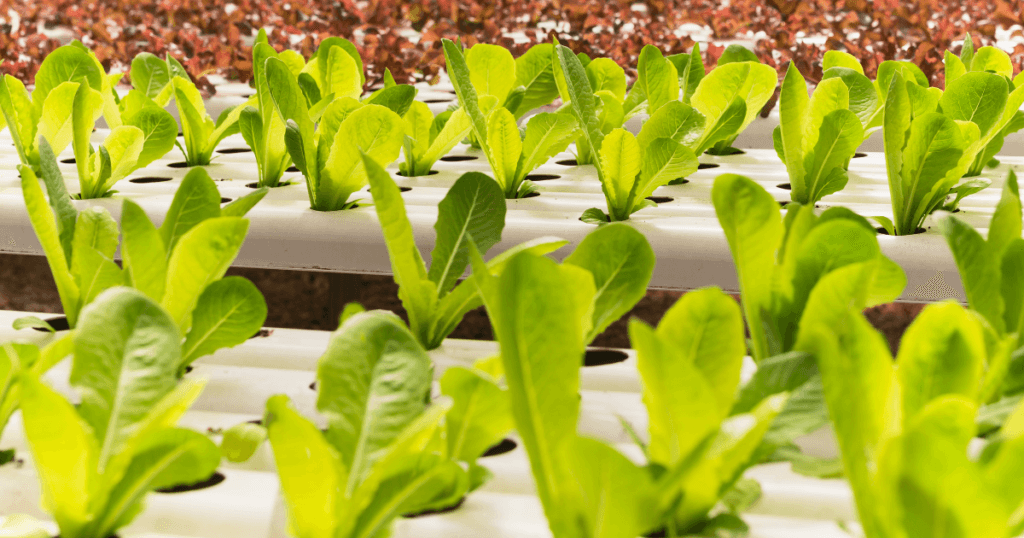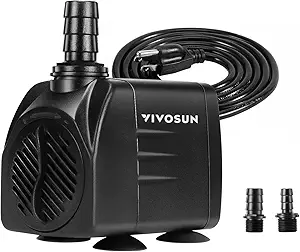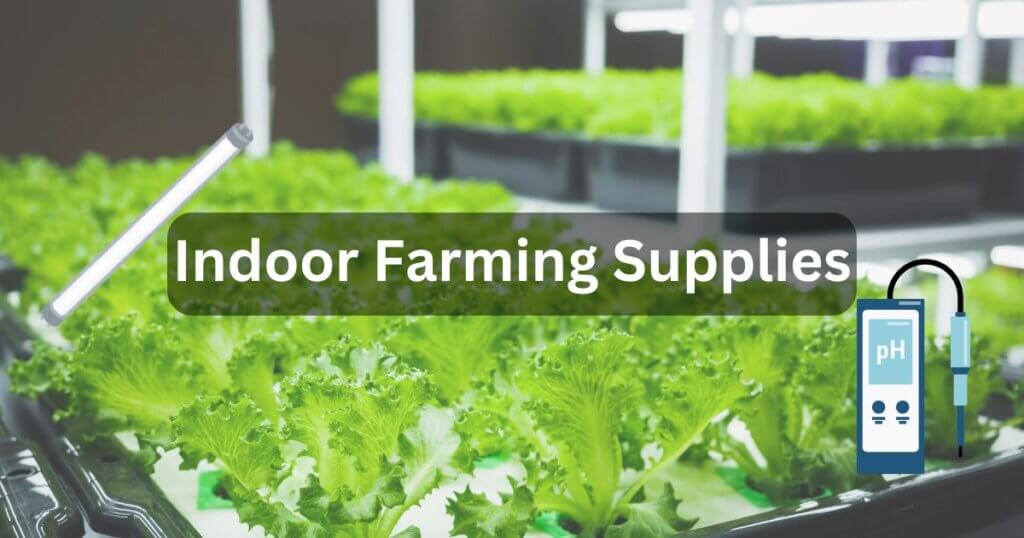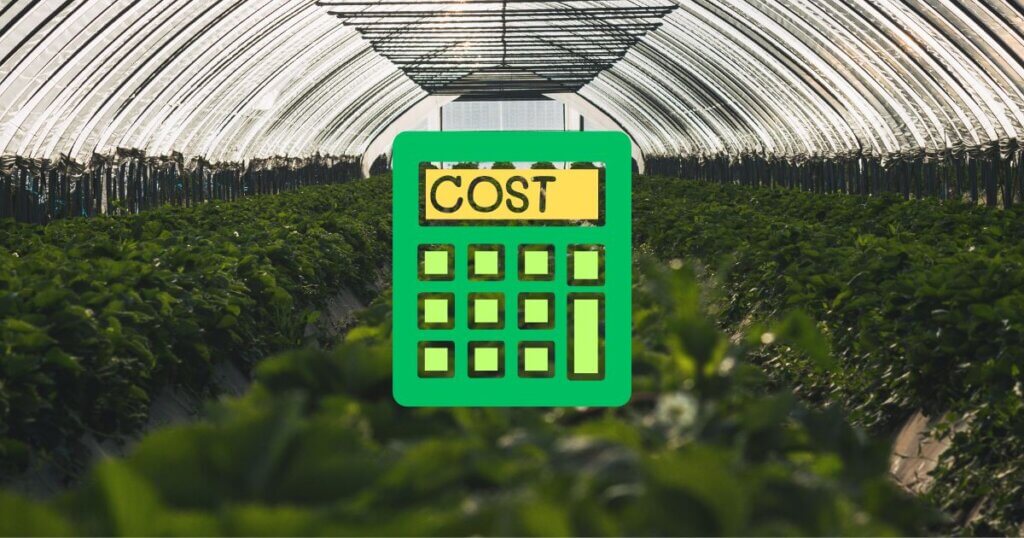Ebb and Flow (Flood and Drain) System Explained

Indoor Farming Hub is an Amazon Associate and earns from qualifying purchases.
Welcome to our comprehensive guide on the Ebb and Flow (Flood and Drain) system, a popular hydroponic technique in modern agriculture. In this article, we will delve into the details of this system, its benefits, and how it works. Whether you’re a seasoned grower or a curious beginner, understanding the ebb and flow system will empower you to optimize plant growth and maximize yields. Let’s dive in!
Table of Contents
What is the Ebb and Flow System?
The Ebb and Flow system, also known as the Flood and Drain system, is a hydroponic method that provides plants with a periodic ebb and flow of nutrient-rich water. This technique utilizes a tray or a container where plants are placed, allowing them to absorb nutrients and water during the flood cycle. The water then recedes during the ebb phase, allowing the roots to receive oxygen and preventing waterlogging. This natural cycle of flooding and draining promotes healthier plant growth by balancing water, nutrients, and air exposure.
How Does the Ebb and Flow System Work?
The Setup
To implement the Ebb and Flow system, you will need a few key components.
Growing Tray or Container: This is where the plants are positioned and flooded with a nutrient solution during the flood cycle.
A high-quality, non-toxic grow tray is essential for setting up a reliable ebb and flow system. The VIVOSUN Grow Trays are made from BPA-free, heavy-duty plastic, perfect for repeated flood and drain cycles without warping or cracking.
Submersible Pump: The pump is responsible for filling the growing tray with the nutrient solution.
A reliable pump like the VIVOSUN 480GPH Submersible Pump ensures consistent water delivery during each cycle, reducing the risk of pump failures that can harm your plants.
Timer: A timer controls the pump, regulating the flood and ebb cycles.
Automating flood and drain cycles is easy with a digital timer like the BN-LINK 7-Day Programmable Timer, offering precision and flexibility for hydroponic systems.
Overflow Drain: An overflow drain prevents the growing tray from overfilling, maintaining the correct water level.
The Flood Cycle
During the flood cycle, the submersible pump is activated by the timer.
The nutrient solution is pumped into the growing tray, allowing the roots to absorb the water and nutrients they need for growth.
The flood cycle typically lasts for a predetermined period, depending on the specific requirements of the cultivated plants.
This cycle ensures that plants consistently receive an optimal amount of water and essential nutrients.
The Ebb Cycle
After the flood cycle, the pump shuts off, and the water begins to recede.
This allows the excess water to drain back into the reservoir or a separate collection system.
Air is drawn into the growing medium as the water level decreases, providing oxygen to the roots.
This oxygenation prevents root rot and enhances the overall health of the plants.
Benefits of the Ebb and Flow System
The Ebb and Flow system offers numerous advantages for commercial growers and hobbyists. Let’s explore some of the key benefits:
1. Enhanced Nutrient Absorption
The periodic flooding and draining of the growing tray in the Ebb and Flow system ensure that plants receive a fresh supply of nutrient-rich water during each flood cycle. This promotes efficient nutrient absorption by the roots, resulting in robust growth and healthy plants. As nutrients are evenly distributed and refreshed, plants experience fewer deficiencies. This continuous renewal of nutrients enhances overall plant performance and yield.
2. Oxygenation and Aeration
The ebb cycle in the system allows the roots to access oxygen, preventing the suffocation of root cells. Oxygenation enhances nutrient uptake, promotes microbial activity in the root zone, and improves plant health. Proper aeration stimulates strong root development, which is essential for vigorous plant growth. Additionally, oxygen-rich environments discourage harmful anaerobic bacteria from developing.
3. Efficient Water Usage
Unlike traditional soil-based cultivation, the Ebb and Flow system optimizes water usage. The ability to recycle and reuse the nutrient solution reduces water waste, making this system environmentally friendly and cost-effective. Growers can significantly lower their water bills while conserving an important natural resource. Moreover, controlled watering minimizes evaporation and runoff, contributing to sustainability.
4. Disease and Pest Control
The Ebb and Flow system discourages stagnant water by periodically draining the growing tray, reducing the risk of disease and pest infestations. The regular movement of water helps flush out pathogens that might otherwise settle in a static environment. Additionally, the controlled environment in hydroponics minimizes the need for pesticides, promoting cleaner and healthier produce. Growers can thus achieve higher yields with fewer chemical interventions, ensuring safer food production.
5. Versatility and Scalability
The Ebb and Flow system can accommodate various plant species, making it versatile for multiple crops, including leafy greens, herbs, and flowering plants.
It works well in both small home setups and large commercial operations.
Additionally, this system is easily scalable, allowing growers to expand their operations as needed.
By adjusting tray sizes and adding more growing units, one can efficiently scale up production without major redesigns.
Implementing the Ebb and Flow System
Step 1: Setting up the Growing Tray
Choose a suitable growing tray or container to hold the desired number of plants.
Ensure that it has sufficient drainage holes and is compatible with the size of your pump and timer.
The tray should be made from durable, non-toxic materials to prevent contamination.
Proper setup at this stage ensures long-term success and minimizes maintenance issues.
Step 2: Placing the Submersible Pump
Position the submersible pump in the reservoir or nutrient solution container.
Connect the pump to the timer and the overflow drain.
Test the pump to ensure proper functionality by simulating a flood cycle.
A reliable pump setup is crucial for consistent water delivery and plant health.
Step 3: Installing the Timer
Install the timer according to the manufacturer’s instructions.
Set the desired flood and ebb intervals based on the specific requirements of your plants.
Timers can be mechanical or digital, with digital ones offering greater precision and customization.
It’s important to find the right balance to avoid overwatering or underwatering.
Step 4: Arranging the Growing Medium and Plants
Fill the growing tray with an appropriate hydroponic growing medium such as clay pellets, coco coir, or rockwool cubes.
Place your plants in the growing medium, ensuring proper spacing for healthy root development.
The growing medium should support the plants physically and promote good drainage and aeration.
Selecting the right medium is essential for optimal moisture and nutrient retention.
Choosing the right growing medium, like 16 LBS Organic Clay Pebbles, ensures excellent aeration and drainage, which is critical for an effective ebb and flow system.
Step 5: Nutrient Solution Management
Prepare the nutrient solution according to the manufacturer’s instructions or the specific requirements of your plants.
Monitor and maintain the pH and nutrient levels to ensure optimal plant growth.
Regularly topping up and refreshing the solution prevents nutrient imbalances and toxic buildup.
Proper nutrient management leads to healthier plants and better yields.
Maintaining correct pH is vital for nutrient uptake. The Bluelab pH Pen provides fast, accurate readings, helping you keep your system in perfect balance.
Step 6: Monitor and Adjust
Monitor the system for clogged drains, pump malfunctions, or pH imbalances.
Adjust the flood and ebb cycles, nutrient solution strength, and pH levels to address plant-specific requirements.
Consistent observation helps detect problems early, ensuring quick intervention before issues escalate.
Fine-tuning the system based on plant feedback is key to maximizing productivity.
Easily adjust and control your nutrient solution’s pH levels with the General Hydroponics pH Control Kit, ideal for beginners and experts alike.
Conclusion
The Ebb and Flow (Flood and Drain) system is a versatile hydroponic technique that provides plants with periodic flooding and draining cycles, optimizing nutrient absorption and promoting robust growth. With enhanced oxygenation, efficient water usage, disease control, and scalability, this system offers a sustainable and effective solution for modern agriculture. Whether you’re a commercial grower or an enthusiastic hobbyist, consider implementing the Ebb and Flow system to unlock the full potential of your crops. Embracing this method can lead to healthier plants, higher yields, and a more efficient farming experience.
FAQs – Ebb and Flow
1. What are the common mistakes to avoid when using the Ebb and Flow system?
Common mistakes include incorrect timing of the flood and ebb cycles, leading to overwatering or underwatering. Another issue is improper setup of the growing tray, which could result in water stagnation or inadequate drainage. Additionally, neglecting to regularly monitor the nutrient solution’s pH and EC levels can hinder plant growth.
2. Can I grow different types of plants in the same Ebb and Flow system?
Yes, but you need to ensure the plants have similar nutrient and water requirements. Plants with significantly different needs, such as those requiring various pH levels or nutrient concentrations, may struggle in the same system. Grouping compatible plants together ensures they thrive in a shared hydroponic environment.
3. How can I adjust the flood and ebb cycle to suit different plants?
Adjust the cycle time based on the specific needs of your plants. For fast-growing plants like leafy greens, shorter flood cycles (e.g., 15-20 minutes) may be necessary. For slower-growing or larger plants like tomatoes, longer cycles (e.g., 30-45 minutes) may be needed. It’s essential to monitor the plants and adjust the timing to prevent overwatering or insufficient watering.
4. Do I need special lighting for plants grown in an Ebb and Flow system?
Yes, if you’re growing indoors or in low-light conditions, supplemental lighting is essential. Use full-spectrum LED grow lights or fluorescent lights to mimic natural sunlight. Ensure the lights are positioned correctly—usually 12-24 inches above the plants—to provide adequate light for photosynthesis without overheating or damaging the plants.
5. How can I troubleshoot water and nutrient imbalances in my Ebb and Flow system?
To troubleshoot water and nutrient imbalances, regularly test the pH and EC (Electrical Conductivity) levels of the nutrient solution. If the pH is too high or low, adjust it using pH up or down solutions. If the EC level is off, either dilute the nutrient solution with more water or add more nutrients. Consistent monitoring helps avoid imbalances that could affect plant health.
External Resources for Ebb and Flow
- Ebb and Flow Hydroponics Overview: This Wikipedia article offers an in-depth explanation of the Ebb and Flow system, including its principles of operation, setup requirements, and benefits.
- Hydroponic Techniques: This section from the Wikipedia page on Hydroponics discusses various hydroponic methods, with a detailed focus on the Ebb and Flow technique, its setup, and operational principles.
- Hydroponic Gardening Guide: This article provides an overview of hydroponic gardening, explaining the concept of growing plants without soil and the benefits of this method, including its relevance to the Ebb and Flow system.
- Ebb and Flow System Setup Guide: This guide offers step-by-step instructions on setting up an Ebb and Flow hydroponic system, covering aspects like choosing components, arranging the growing medium, and managing the nutrient solution.
- Hydroponic System Comparison: This resource compares different hydroponic systems, highlighting the advantages and disadvantages of the Ebb and Flow method about other techniques.
Videos About Ebb and Flow










